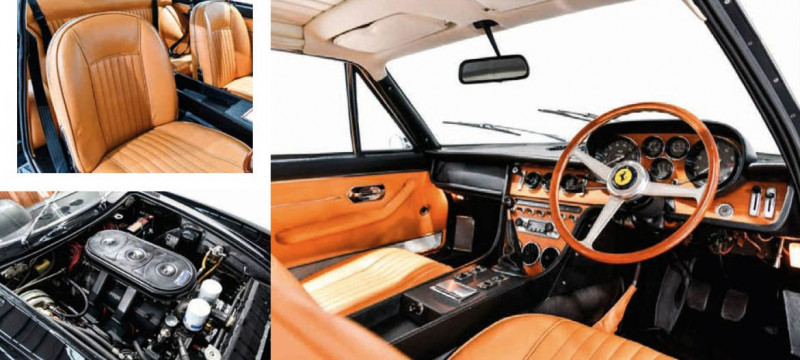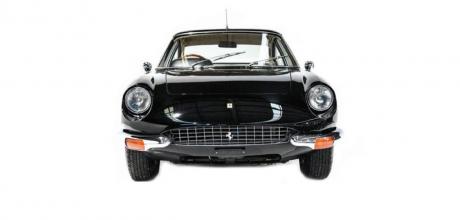1967 Ferrari 365 GT 2+2
The biggest-ever Ferrari at the time also took the brand into a state of lux
RETRO SERIES
Ferrari has recently confirmed that the Purosangue SUV will go into production this year. Spy photos suggest the family-friendly Ferrari is more oversized hot-hatch than soccer-mum SUV, but we still can’t shake our vision of Enzo Ferrari spinning in his grave at 7500rpm.
Il Commendatore famously declared there would never be a four-door Ferrari. His view was reinforced in 2014 by Sergio Marchionne, CEO of Ferrari (and Fiat-Chrysler) until his sudden passing in 2018: “There will be no four-door or SUV from Ferrari.” Three years later, Marchionne announced the SUV project.

Four-seater Ferraris had long been another matter. The first true production Ferrari four-seater (overlooking various low-volume coachbuilds) was the 250 GTE 2+2, launched in 1960.
With more than 950 made, the 3.0-litre V12 250 GTE became the biggest selling Ferrari model to that time.
It’s said that Enzo used a 250 GTE 2+2 as his personal car; better documented is his use of a subsequent 2+2 model, the 4.0-litre 330 GT.
If Enzo liked the practicality of his four-seaters, he surely loved the lire that they brought in to help fuel the golden age of Ferrari’s dominance at Le Mans.
In 1967 came the 365 GT 2+2. With a 4.4-litre version of the Colombo V12, the new 2+2 retained the 330’s 2647mm wheelbase, but with longer overhangs and a flowing shape that took cues from designer Aldo Brovarone’s recent 500 Superfast and concurrent Dino 206 GT.
At almost five metres overall, it was the largest Ferrari ever, prompting the US Road & Track to nickname it Queen Mary (the legendary liner was moored permanently in California the same year). The familiar steel-tube spaceframe chassis carried a steel body, with fibreglass floor pan and firewall.

Grand touring sophistication extended to the dual Ferrari firsts of power steering and air conditioning, along with an independent rear suspension (versus the 330’s leaf-sprung live axle) with a hydraulic self-levelling system.
The 365 GT 2+2’s success was also boosted by its compliance with newly introduced US safety and emissions regulations; it was briefly Ferrari’s sole model in the US market. Ultimately 801 examples were built, 52 of them in right-hand drive, before it was replaced in 1971 by the ‘Daytona’-based 365 GTC/4. Since 1960, Ferrari has only twice been without a V12 2+2 in its range – from 1989-1992 and right now, after the 2020 axing of the GTC4Lusso.
- LIVING LARGE The 2+2 more than earned its title, with rear seating space and grand touring comfort praised in contemporary road tests. The cabin was luxuriously appointed, with a wood rim steering wheel framing comprehensive Veglia instrumentation. A tall, timber veneered centre console straddled the front-mounted gearbox and housed switches for the power windows. Down below, alloy disc wheels were standard, though many owners optioned more traditional Borrani wires.
- INSPECTING COLOMBO Gioachino Colombo designed Ferrari’s first V12, the jewel-like 1.5-litre ‘125’ in 1947. Successive increases in stroke, bore and (in 1963) bore spacings, brought the all-alloy, 60-degree ‘Colombo’ V12 to the 4390cc ‘Tipo 245’ in the 365 GT 2+2. The last Ferrari V12 with sohc per bank, it’s fed by six Webers and produces 245kW and 364Nm. Via a five-speed manual ’box, the 1480kg coupe runs 0-100km/h in 7.1 seconds and has a top speed of 245km/h.
IN DETAIL
- 1967 Paris Salon de l’Automobile launch
- SIX Automatic-trans cars built in 1970 for US customers
- ONE First Ferrari with factory air-con and power steering
- 400K typical price (in A$) fora right-hand-drive car today


